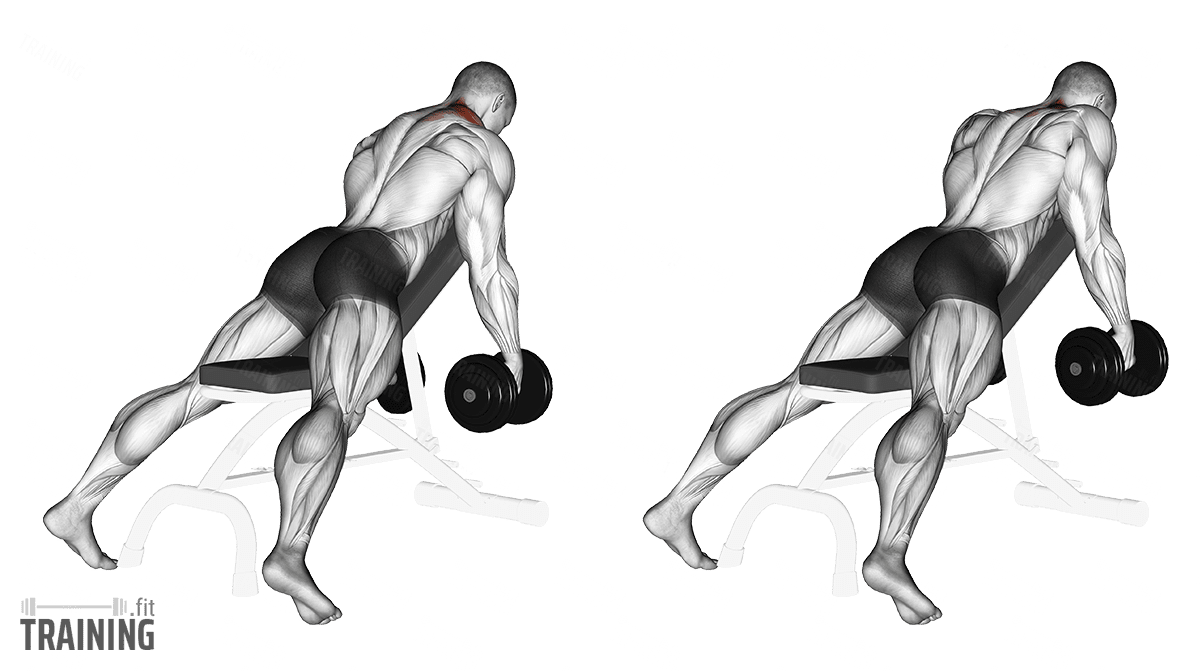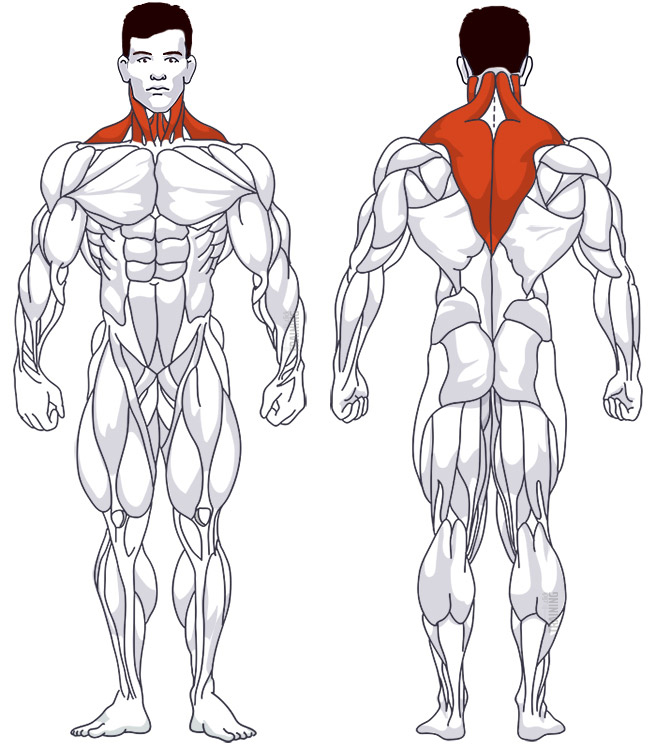Prone Incline Dumbell Shrug
Isolation exercise, Free weightsOverview

Main muscles
- Neck: Trapezius muscle
(Musculus trapezius)
Prone Incline Dumbell Shrug: Basics and alternatives

Involved main muscle groups:
Prone Incline Dumbell Shrug
Prone Incline Dumbbell Shrugs, also known as Prone Incline Shoulder Raises, use a similar technique to Prone Incline Rowing. Lying on your stomach, you pull the dumbbell towards your body while keeping your arms straight. The movement resembles regular dumbbell shrugs, but it focuses more on the middle part of the neck muscles due to the inclined position.
You can also try Barbell Shrugs or Cable Shrugs as alternatives.
Correct execution
The angle of the backrest is up to you. There’s no golden rule here—anywhere between 40 and 70 degrees of incline can work, depending on your individual body structure.
It’s essential to have enough space below you to let your arms hang during Prone Incline Shoulder Raises. Make sure to pay attention to this.
Video tutorial
Step-by-step instructions
Grab the dumbbells and approach the incline bench.
Position yourself on the incline bench, lying face down and holding the dumbbells straight down. Keep your feet shoulder-width apart for stability. You’re now ready to begin.
Lift your shoulders upward and backward. Keep your arms extended downward. Don’t bend your elbows or rotate your arms with your shoulders. The movement comes only from lifting your shoulders towards your neck.
Pause briefly in the raised position before slowly and controlledly returning to the starting position.
Common mistakes
Avoid bending your upper and lower arms at the shoulder and elbow. The movement during the shoulder raise should only involve pulling your shoulders back and up. Your arms should always face downward and move straight backward. Although the range of motion may seem small, it’s enough to activate the triceps muscle.
Additionally, keep your arms straight and aligned with the ground throughout the entire exercise. This position between the arms and shoulders helps focus on the middle neck muscles.